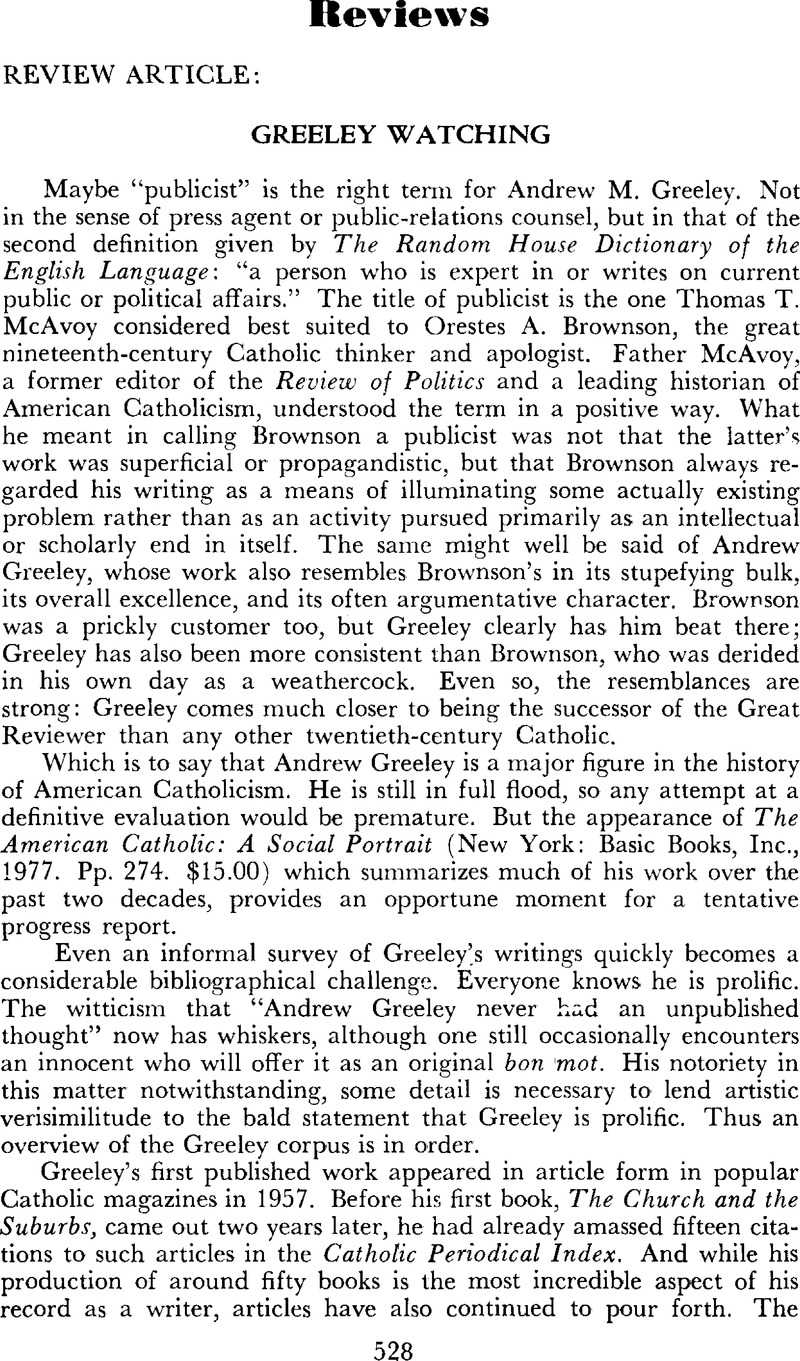No CrossRef data available.
Article contents
Abstract

- Type
- Reviews
- Information
- Copyright
- Copyright © University of Notre Dame 1978
References
page 536 note * The actual question asked on the 1974 NORC survey was worded as follows: “Suppose you were in a parish that had an elementary school that had been in existence for as long as you could remember and had done a good job of educating children. The pastor announced one Sunday that the school would have to close because of financial problems unless everyone in the parish gave some extra money to support it. Would you be willing to donate more money to keep the school going, that is, more than you give now?” See Greeley, Andrew M., McCready, William C., and McCourt, Kathleen, Catholic Schools in a Declining Church (Kansas City, 1976), p. 403Google Scholar, for the text of the question, and pp. 257–260, for discussion of the findings on this point and on the follow-up question inquiring how much additional money the respondent might contribute.
page 537 note * Msgr. Ellis's statement that he did not suppress any love letters and that there were none to be suppressed was communicated to me in personal conversation. He also stated that he had checked his own recollection by telephoning David Sweeney, who confirmed that there were no love letters.
For Sweeney's original account see his The Life of John Lancaster Spalding, First Bishop of Peoria, 1840–1916 (New York, 1965), pp. 308–309Google Scholar. Barger's account is more circumstantial. See Barker, Robert N., “John Lancaster Spalding: Catholic Educator and Social Emissary” (Ph.D. diss., University of Illinois, 1976), pp. 24–27, 34–35Google Scholar. Gaffey's, James P. biography of the man who investigated the accusations against Spalding deals with the episode very briefly; see his Citizen of No Mean City: Archbishop Patrick Riordan of San Francisco (1841–1914) (no city, 1976), pp. 345–346Google Scholar.
The evidence for a liaison between Spalding and Mary Gwendolen Caldwell is as follows: In 1900, when she thought she was dying, M. G. Caldwell (by then embittered against Spalding and no longer a Catholic) told her sister Elizabeth, a priest, and another woman of an illicit relationship between herself and Spalding. When Spalding's name was mentioned for Chicago, Elizabeth relayed the accusation to Rome, at first in very vague terms. Sent to investigate the charges, Archbishop Riordan tracked down the unidentified priest, who informed Riordan of the deathbed accusation made by M. G. Caldwell and convinced him (Riordan) that Spalding was guilty of the charges. Spalding was therefore knocked out of further consideration for Chicago, never had a chance to respond to the accusation, and was apparently never informed of it. (Mary Gwendolen Caldwel‘s middle name is spelled differently by different authorities. I have followed Sweeney's spelling.)


